Archaeology & History
In a Remarkable Find, Archaeologists Exploring the ‘Cave of Horror’ in Israel Have Discovered a New Dead Sea Scroll
They also discovered a partially mummified 6,000-year-old skeleton of a child.
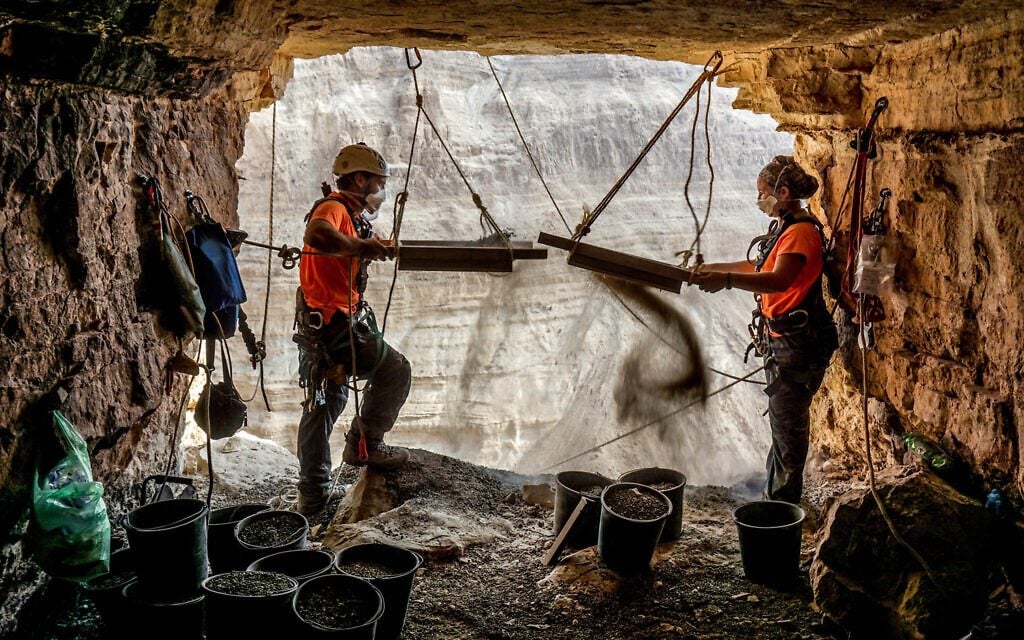
They also discovered a partially mummified 6,000-year-old skeleton of a child.

Sarah Cascone

For the first time in 60 years, archaeologists have discovered a new fragment of the Dead Sea Scrolls, a cache of ancient Jewish and Hebrew religious manuscripts uncovered in the Qumran Caves on the northern shore of the Dead Sea.
The Israel Antiquities Authority, which carried out the excavations, believes the new scroll, written in Greek, is actually a missing part of the “Book of the 12 Minor Prophets” scroll, first discovered in 1961. It contains verses from Zechariah 8:16-17 and Nahum 1:5-6. The minor differences in the wording compared to other known manuscripts are important in helping shape our understanding of the evolution of the standardized Hebrew Bible.
“When we think about the biblical text, we think about something very static. It wasn’t static. There are slight differences and some of those differences are important,” Joe Uziel, head of the antiquities authority’s Dead Sea Scrolls unit, told the Associated Press.
The first Dead Sea Scroll was found by a Bedouin shepherd in 1947 in one of the most significant archaeological discoveries of the 20th century.
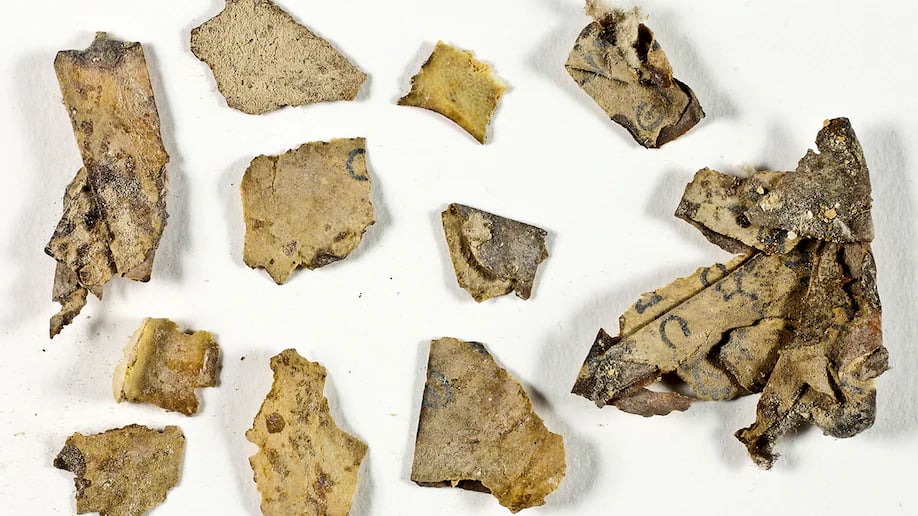
A new Dead Sea Scroll featuring part of the Book of the Twelve Minor Prophets scroll, written in Greek. Photo by Shai Halevi, courtesy of the Israel Antiquities Authority.
Dating from the third century BC to the first century AD, the parchment and papyrus manuscripts contain the earliest known texts from the Hebrew Bible, as well as other apocryphal writings. (Fragments of the scrolls that came on the market after 2002, some of which were infamously purchased by the Museum of the Bible in Washington, D.C., are now believed to be forgeries.)
The new fragments were uncovered in the so-called “Cave of Horror,” where archaeologists in the 1950s found skeletons of men, women, and children killed during the Bar Kokhba revolt, a Jewish rebellion against Rome circa 132 to 136, during the reign of Emperor Hadrian.
Evidence of Roman encampments on the cliff above the cave suggests that the rebels remained under siege until they died of starvation. The only way to access the cave is by rope, lowering down some 200 feet.
“The desert team showed exceptional courage, dedication and devotion to purpose, rappelling down to caves located between heaven and earth,” Israel Hasson, the director of the Israel Antiquities Authority, told the New York Times. The archaeologists then went “digging and sifting through [the caves], enduring thick and suffocating dust, and returning with gifts of immeasurable worth for mankind.”
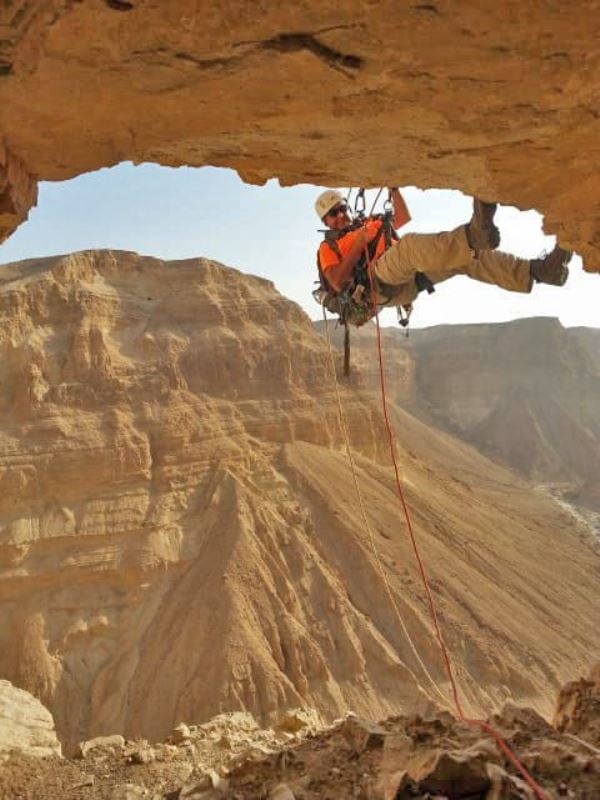
Rappelling to the Cave of Horrors. Photo by Eitan Klein, courtesy of the Israel Antiquities Authority.
There have been extensive excavations in the Qumran Caves since 2017, carried out by the Israel Antiquities Authority in an effort to prevent looters from getting their hands on historic artifacts in the desert’s remote caves.
“For the first time in 70 years, we were able to preempt the plunderers,” Amir Ganor, head of the antiquities theft prevention unit, told the AP.
The new Dead Sea Scroll is among several recent archaeological finds, including a partially mummified 6,000-year-old skeleton of a child, Jewish coins from the time of the Bar Kokhba rebellion, ancient arrowheads, and a 10,500-year-old basket, kept intact—lid and all—over the millennia thanks to the desert’s hot, arid environment.
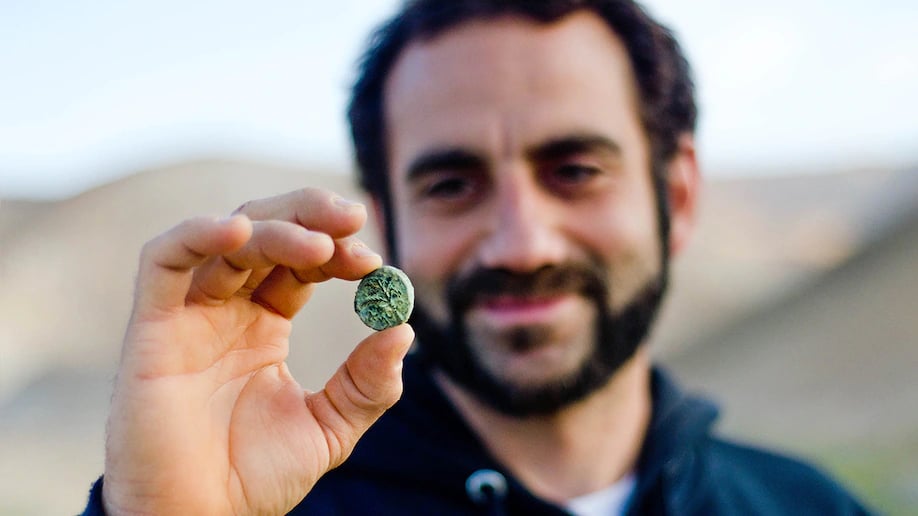
Archaeologist Hagay Hamer holding a Bar Kokhba coin found in the desert. Photo by Yoli Schwartz, courtesy of the Israel Antiquities Authority.
“The child’s skeleton and the cloth wrapping were remarkably well preserved,” antiquities authority historian Ronit Lupu told the Jerusalem Post. “Because of the climatic conditions in the cave, a process of natural mummification had taken place; the skin, tendons, and even the hair were partially preserved, despite the passage of time.”
Teenagers from the Nofei Prat pre-military academy were responsible for the basket discovery, which the Israel Antiquities Authority believes may be the oldest-known basket in the world. Made from woven reeds, it is from the Neolithic period, predating the development of pottery in the region.
See more photos of the discoveries below.
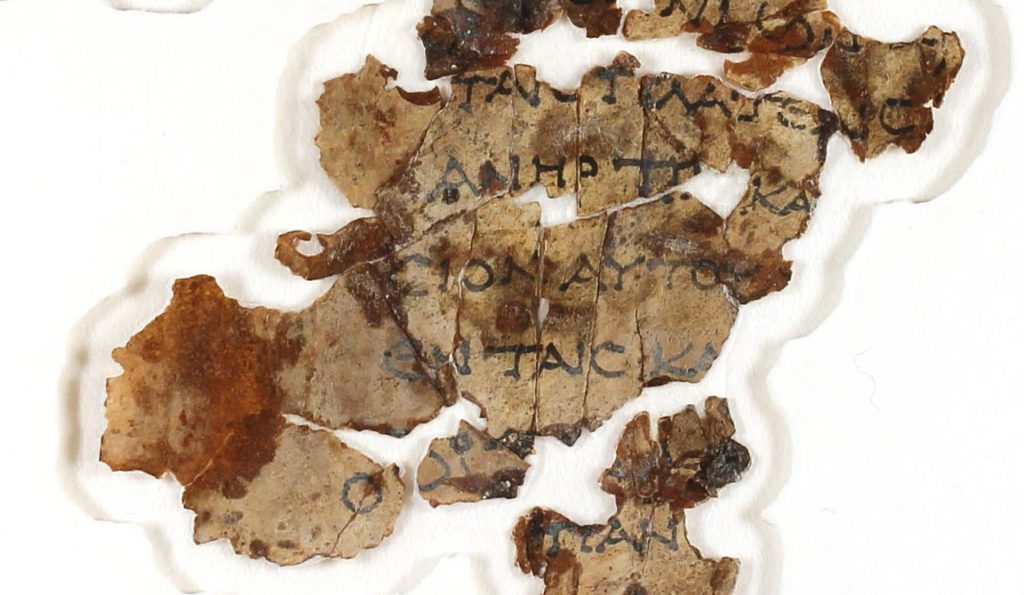
A new Dead Sea Scroll featuring part of the Book of the Twelve Minor Prophets scroll, written in Greek. Photo by Shai Halevi, courtesy of the Israel Antiquities Authority.
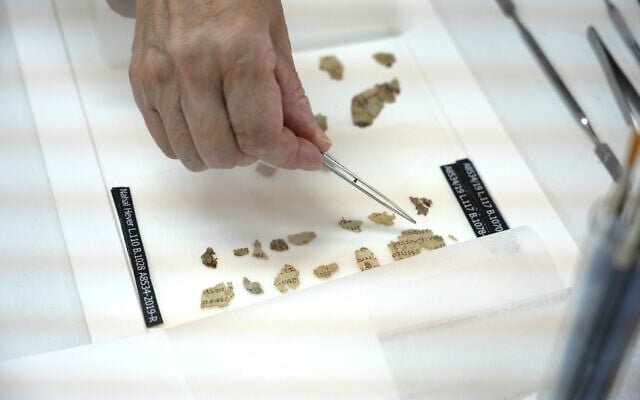
Sections of the Dead Sea Scroll discovered in the Judean Desert after conservation. Photo by Shai Halevi, courtesy of the Israel Antiquities Authority.
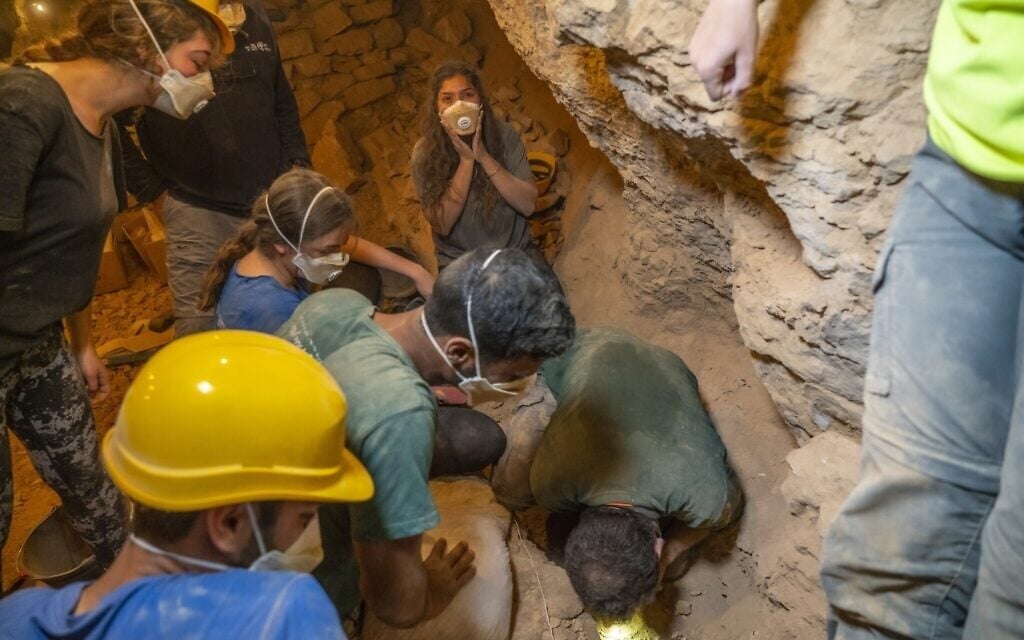
Teenagers from pre-military preparatory programs finding the 10,500-year-old basket during the excavations. Photo by Yaniv Berman, courtesy of the Israel Antiquities Authority.
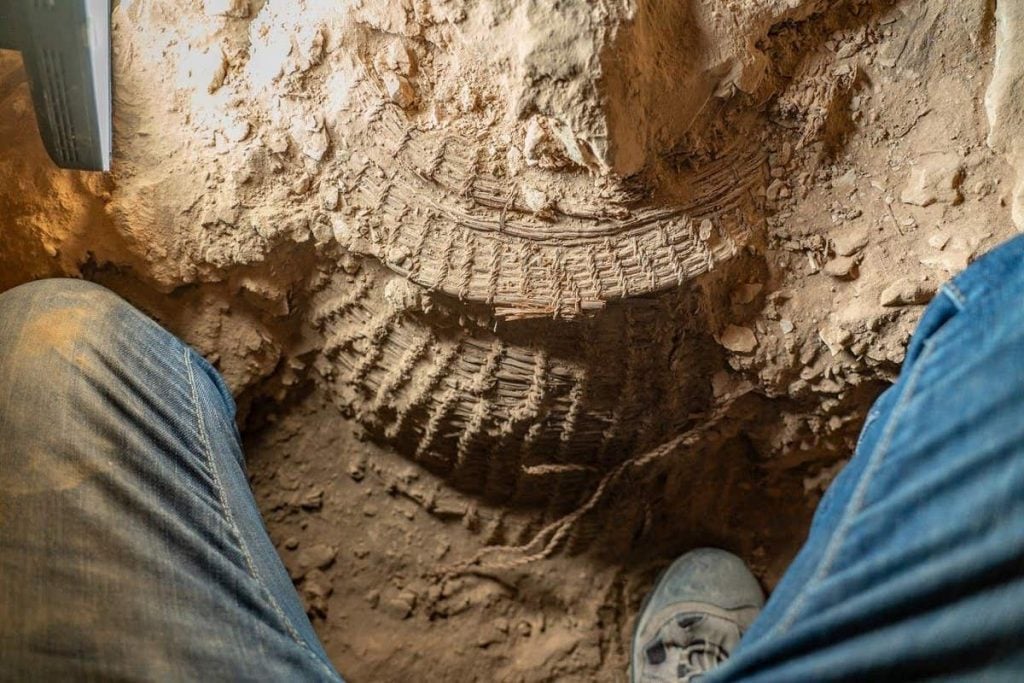
The 10,500-year-old basket as found in Muraba’at Cave. Photo by Yaniv Berman, courtesy of Israel Antiquities Authority.
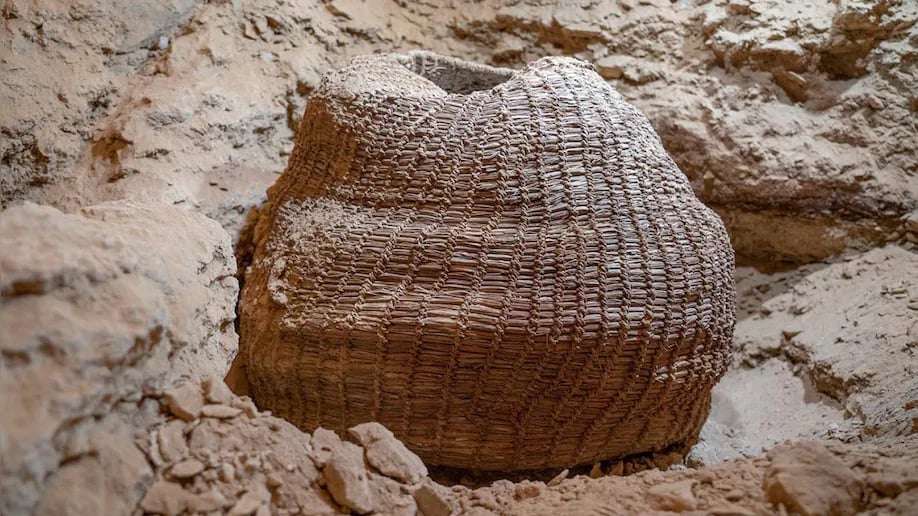
The 10,500-year-old basket as found in Muraba’at Cave. Photo by Yaniv Berman, courtesy of Israel Antiquities Authority.
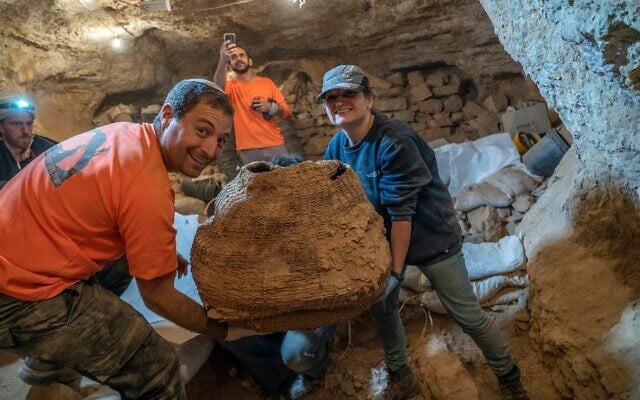
Archaeologists Chaim Cohen and Naama Sukenik with the world’s oldest basket, as found in Muraba‘at Cave. Photo by Yaniv Berman, courtesy of the Israel Antiquities Authority.
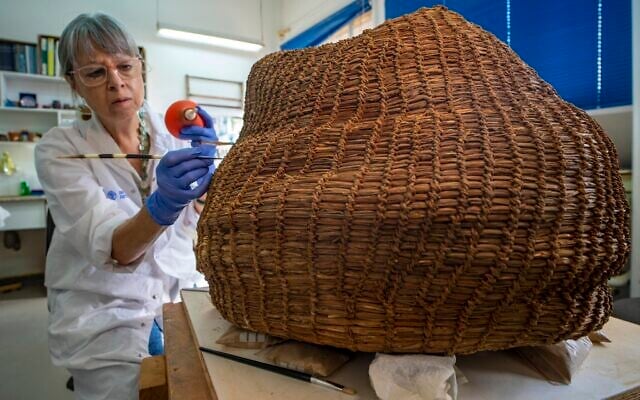
Conservation work on the basket in the Israel Antiquities Authority’s laboratories. Photo by Yaniv Berman, courtesy of the Israel Antiquities Authority.
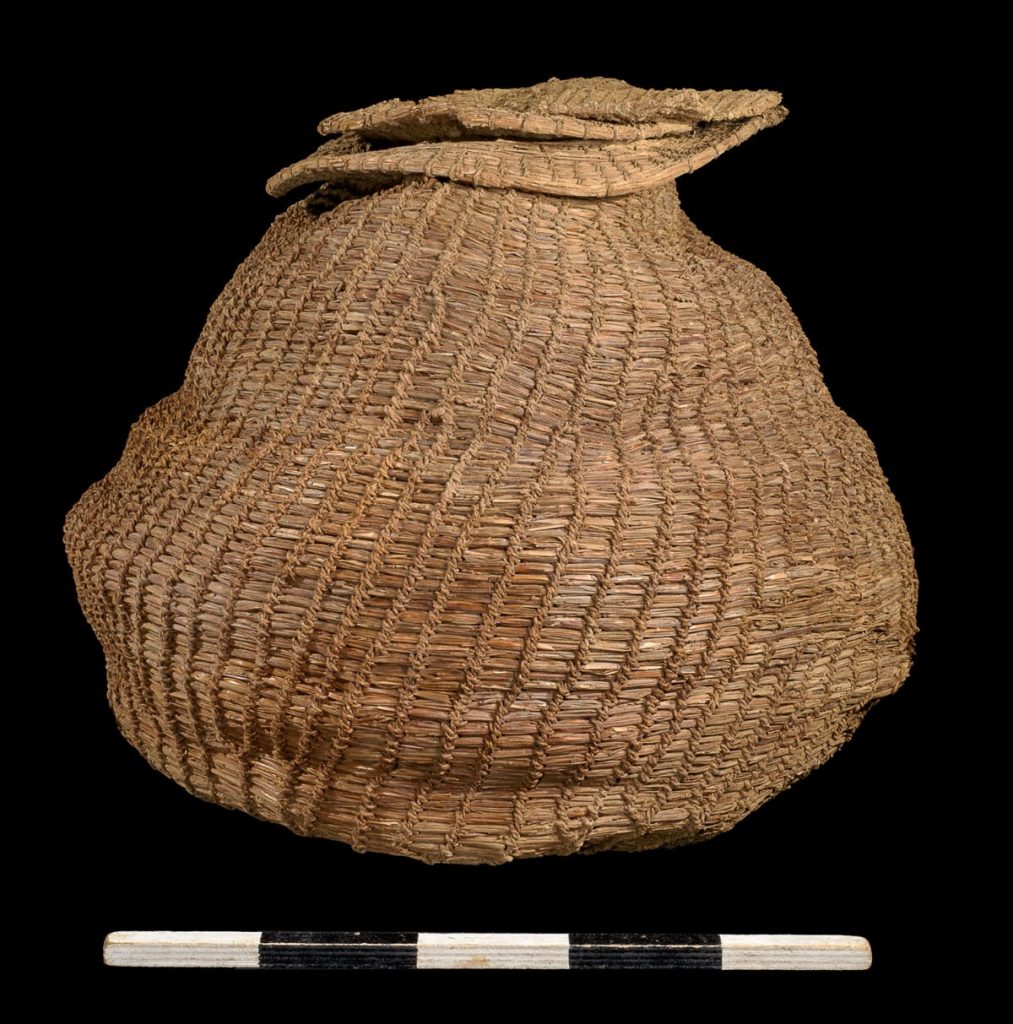
A 10,500-year-old basket with lid. Photo by Guy Fitoussi, courtesy of the Israel Antiquities Authority.
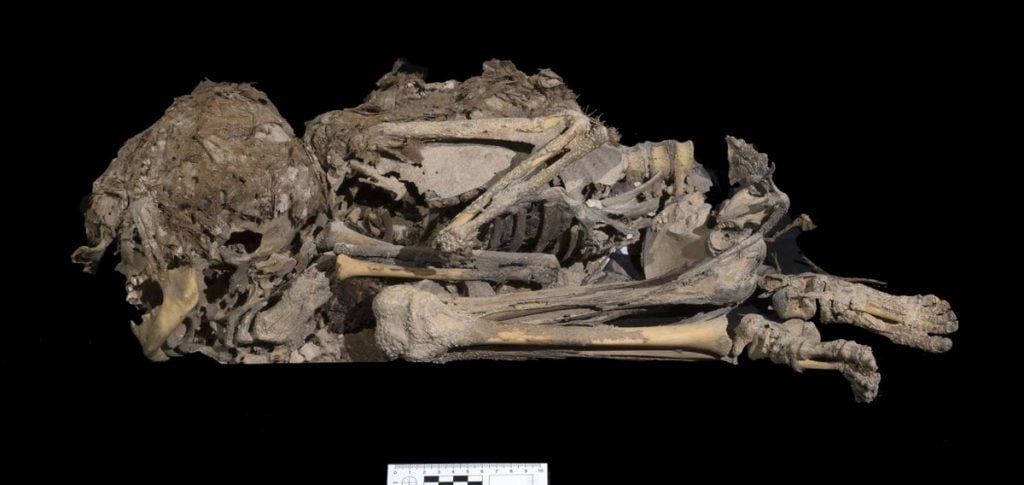
6,000-year-old skeleton of a girl or a boy who was buried wrapped in cloth. Photo by Emil Aladjem, courtesy of the Israel Antiquities Authority.
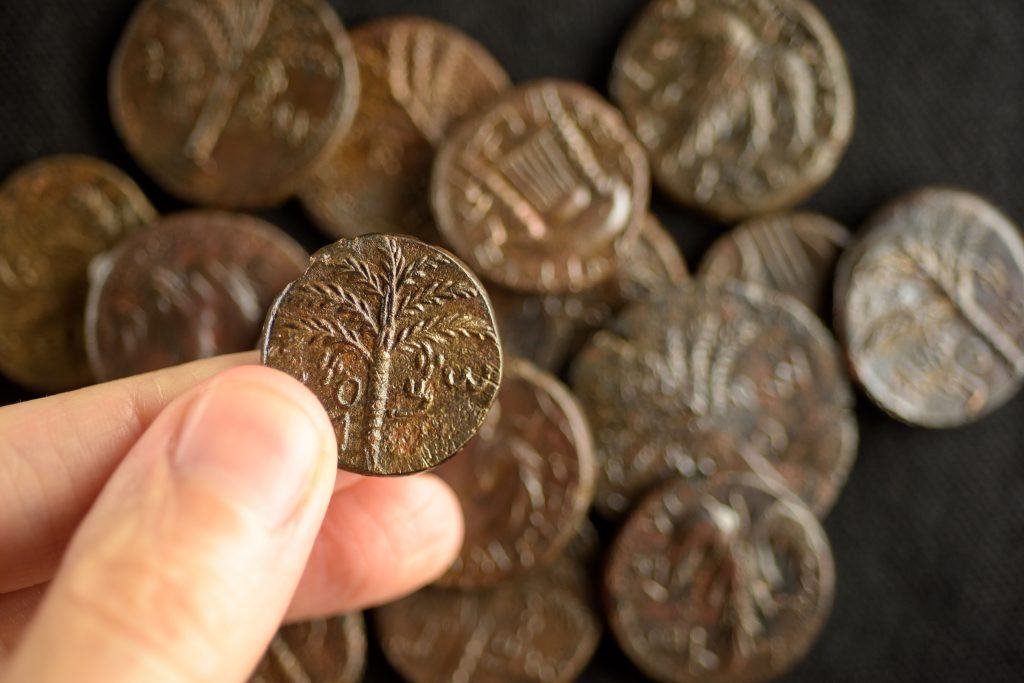
A rare cache of coins from the Bar Kokhba period. Photo by Dafna Gazit, courtesy of the Israel Antiquities Authority
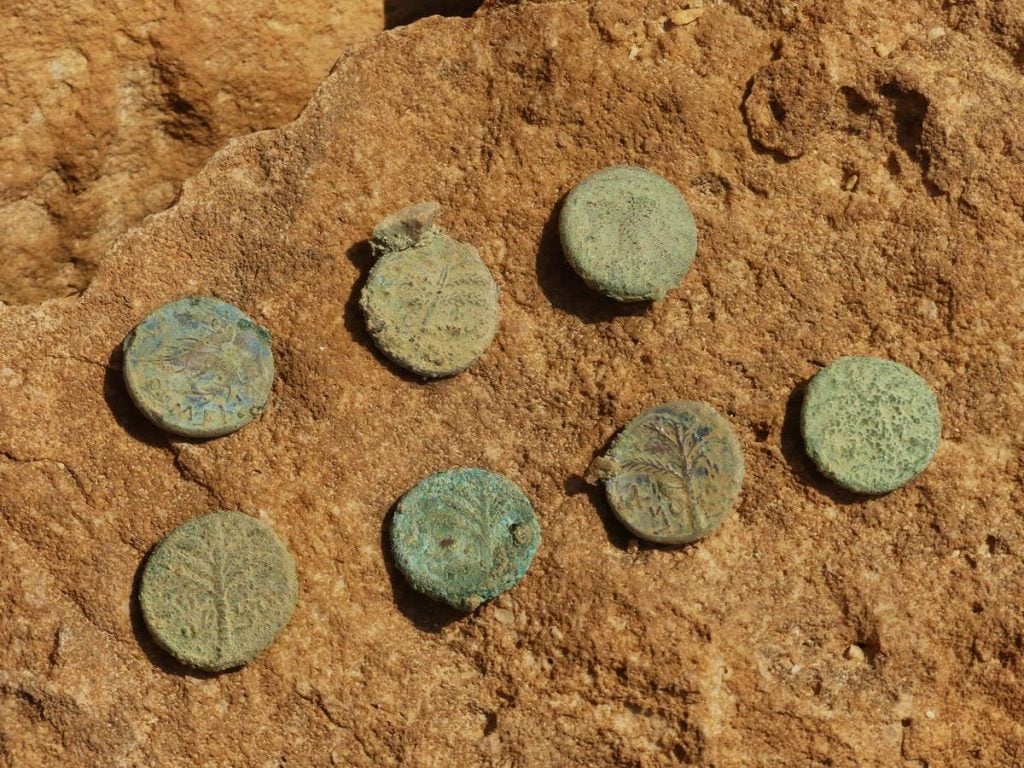
Cache of Bar Kokhba coins. Photo by Ofer Sion, courtesy of the Israel Antiquities Authority.
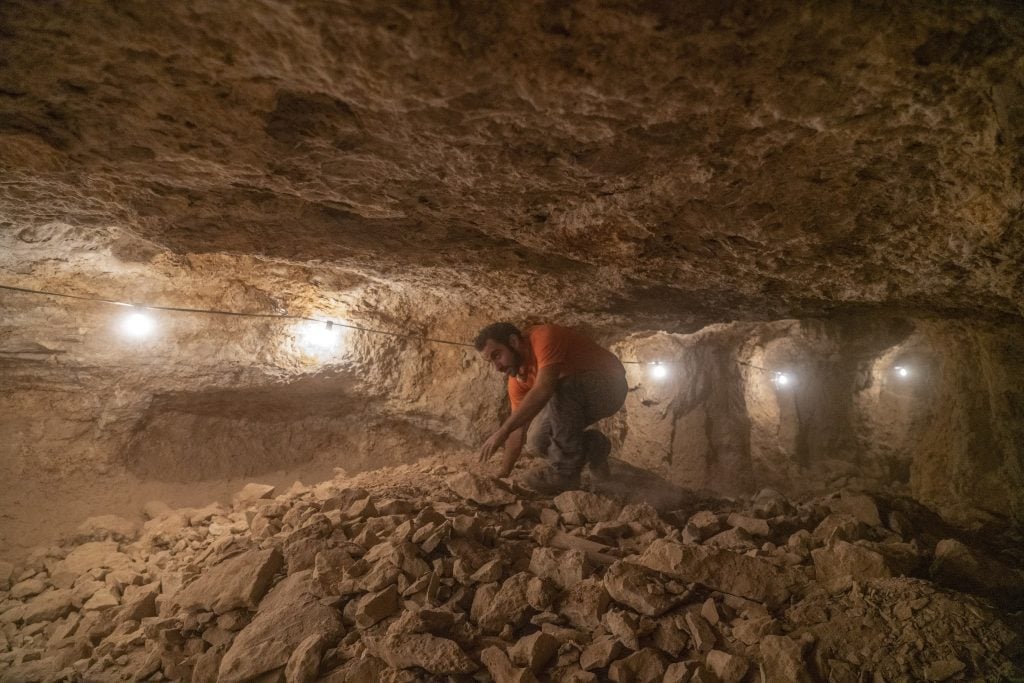
The excavation of the caves. Photo by Yoli Schwartz, courtesy of the Israel Antiquities Authority.
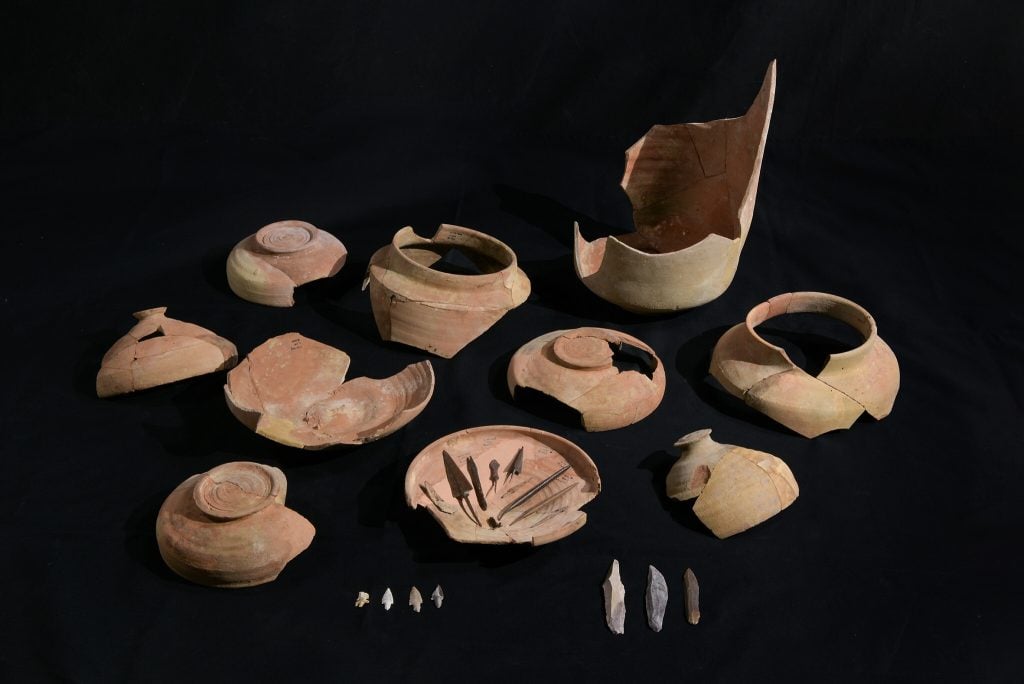
Finds from the caves: fragments of Qumran jars and arrowheads from the prehistoric and Roman periods. Photo by Dafna Gazit, courtesy of the Israel Antiquities Authority.
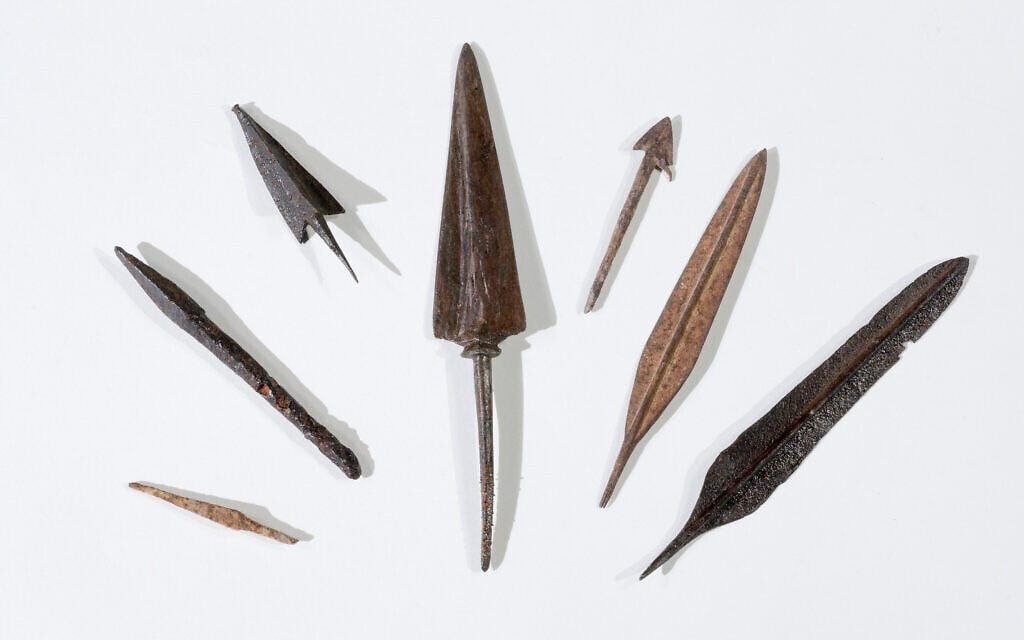
Arrowheads from the Roman period discovered in the Judaen Desert operation. Photo by Dafna Gazit, courtesy of the Israel Antiquities Authority.
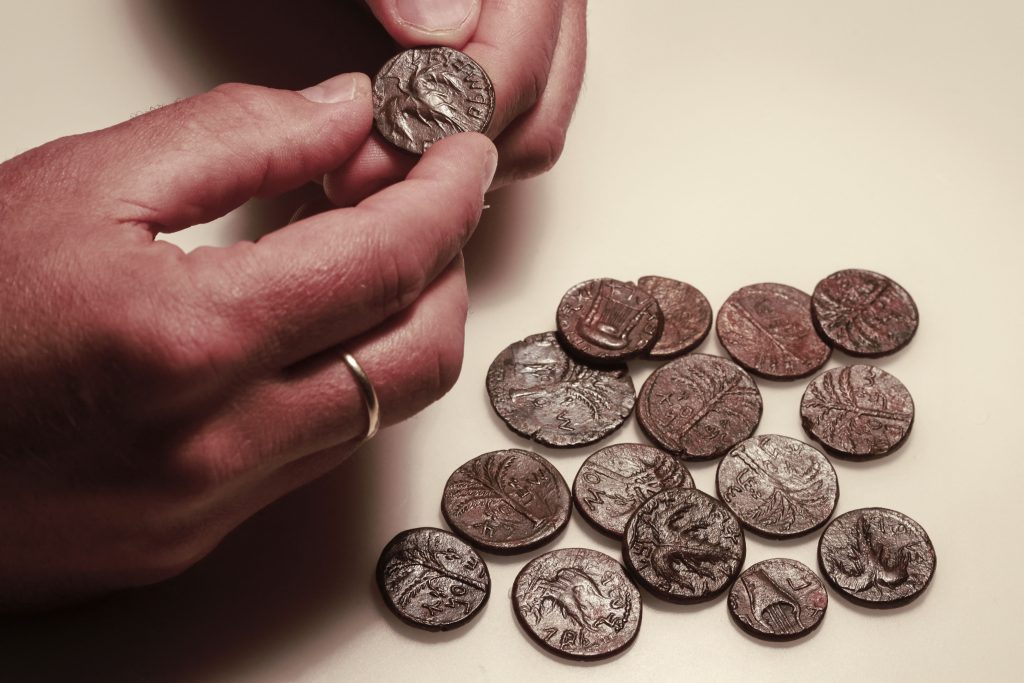
An archaeologist at the Israel Antiquities Authority shows ancient coins from the Bar Kochba Jewish revolt period, excavated from an area in the Judean Desert, displayed at the IAA’s Dead Sea conservation laboratory in Jerusalem. Photo by Menahem Kahana/AFP via Getty Images.
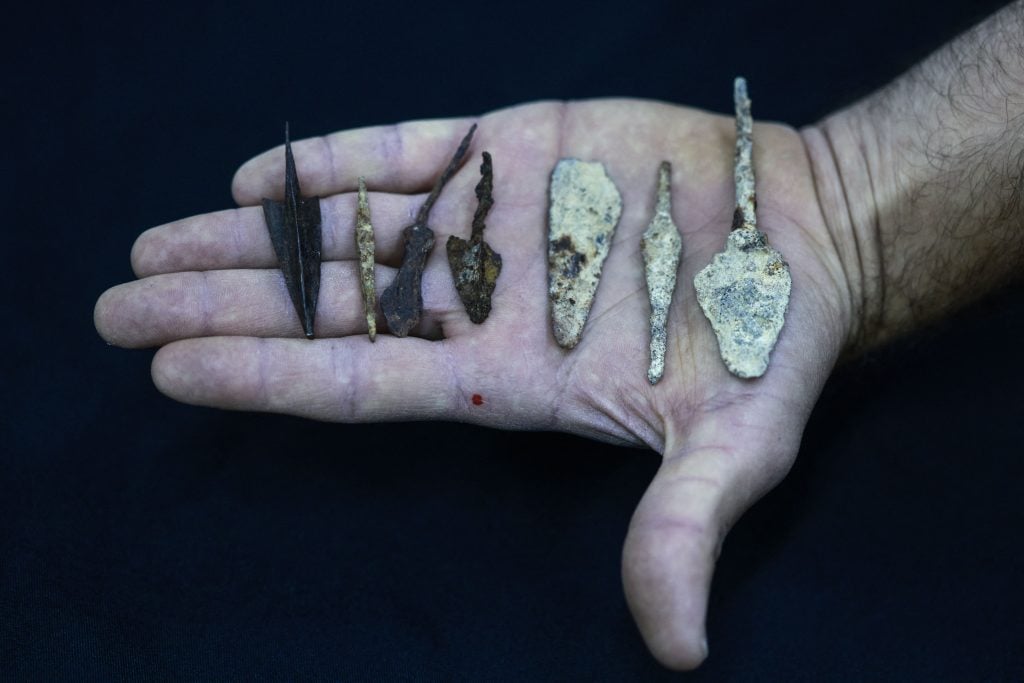
An archaeologist at the Israel Antiquities Authority shows arrowheads from the Bar Kochba Jewish revolt period, excavated from an area in the Judean Desert, displayed at the IAA’s Dead Sea conservation laboratory in Jerusalem. Photo by Menahem Kahana/AFP via Getty Images.
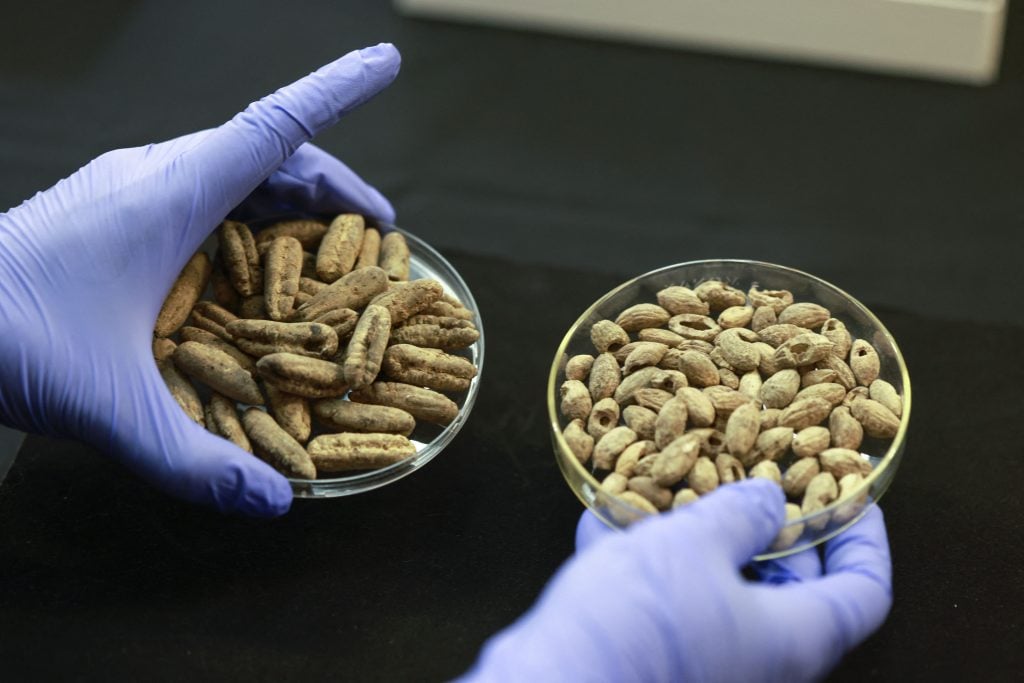
An archaeologist at the Israel Antiquities Authority shows ancient seeds from the Bar Kochba Jewish revolt period, excavated from an area in the Judean Desert, after conservation work is done at the IAA’s Dead Sea conservation laboratory in Jerusalem. Photo by Menahem Kahana/AFP via Getty Images.
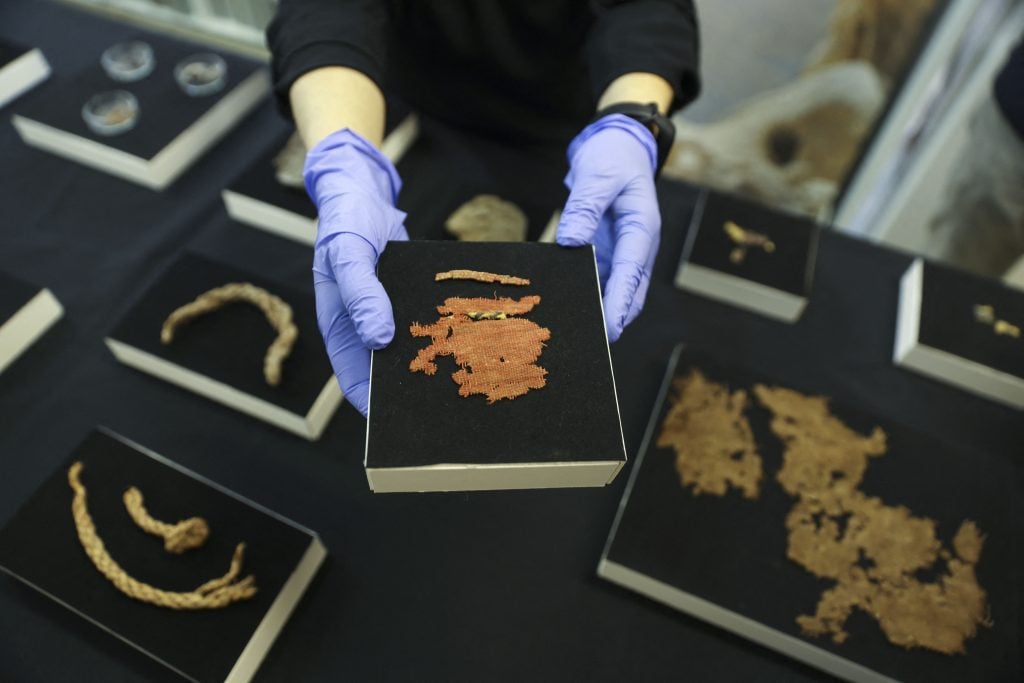
An archaeologist at the Israel Antiquities Authority shows a cloth fragment from the Bar Kochba Jewish revolt period, excavated from an area in the Judean Desert, after conservation work is done at the IAA’s Dead Sea conservation laboratory in Jerusalem. Photo by Menahem Kahana/AFP via Getty Images.
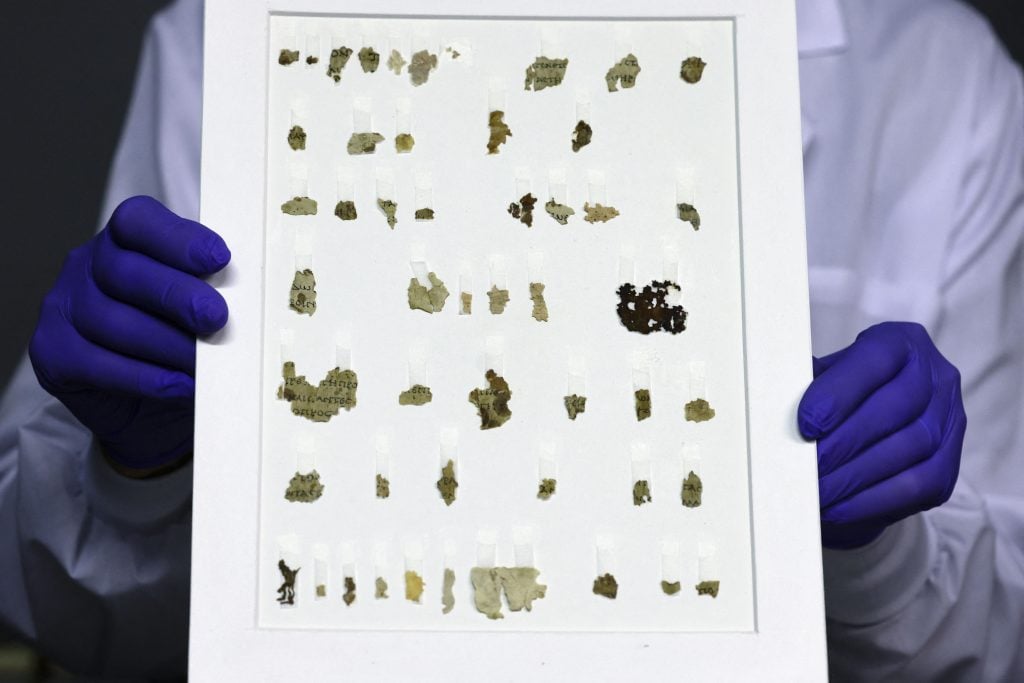
Israel Antiquities Authority conservator Tanya Bitler displays recently-discovered 2000-year-old biblical scroll fragments from the Bar Kochba period, after completion of preservation work at the authority’s Dead Sea conservation lab in Jerusalem. Photo by Menahem Kahana/AFP via Getty Images.
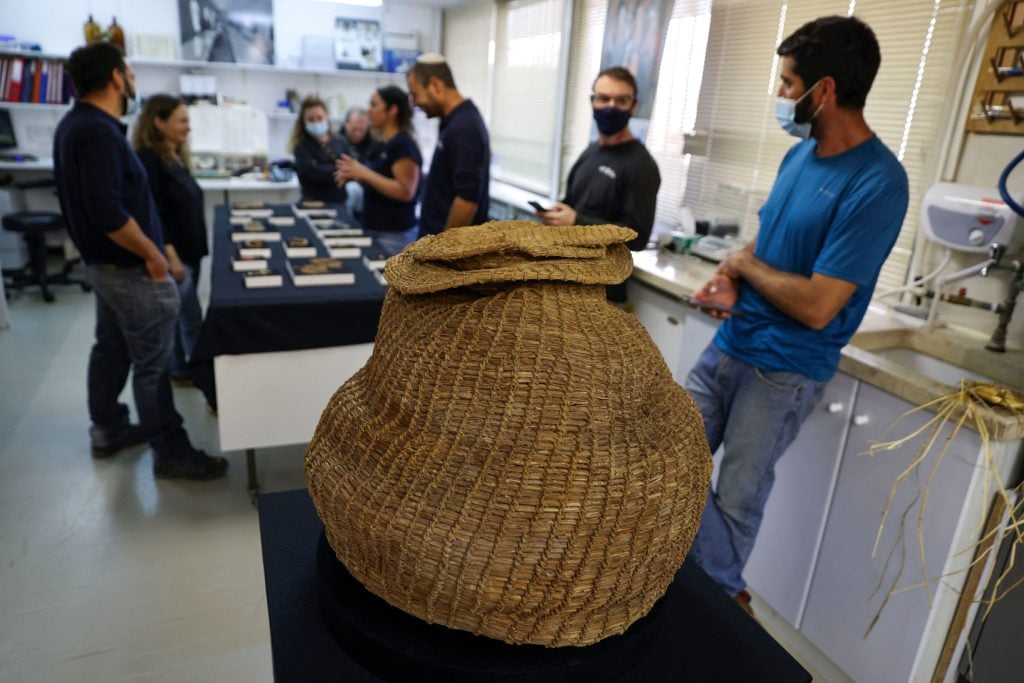
Israel Antiquities Authority archaeologists stand next to a 10,500-year-old basket dating back to the Neolithic period that was unearthed in Murabaat Cave in the Judean Desert, and is displayed at the IAA’s Dead Sea conservation laboratory in Jerusalem. Photo by Menahem Kahana/AFP via Getty Images.
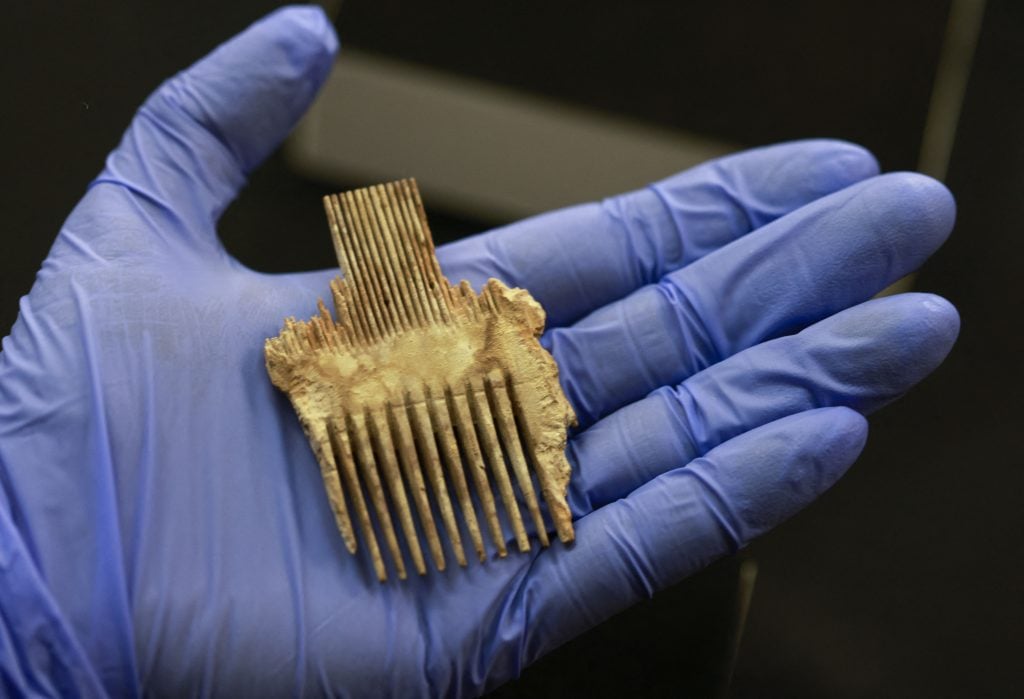
An archaeologist at the Israel Antiquities Authority shows a lice comb from the Bar Kochba Jewish revolt period, excavated from an area in the Judean Desert, after conservation work is done at the IAA’s Dead Sea conservation laboratory in Jerusalem. Photo by Menahem Kahana/AFP via Getty Images.